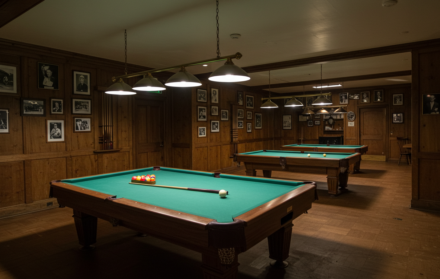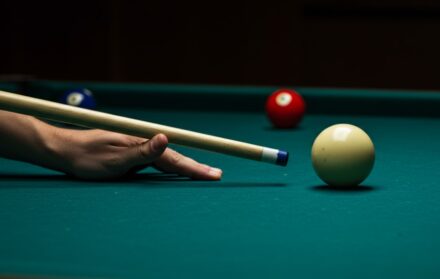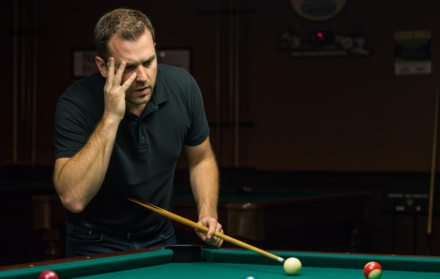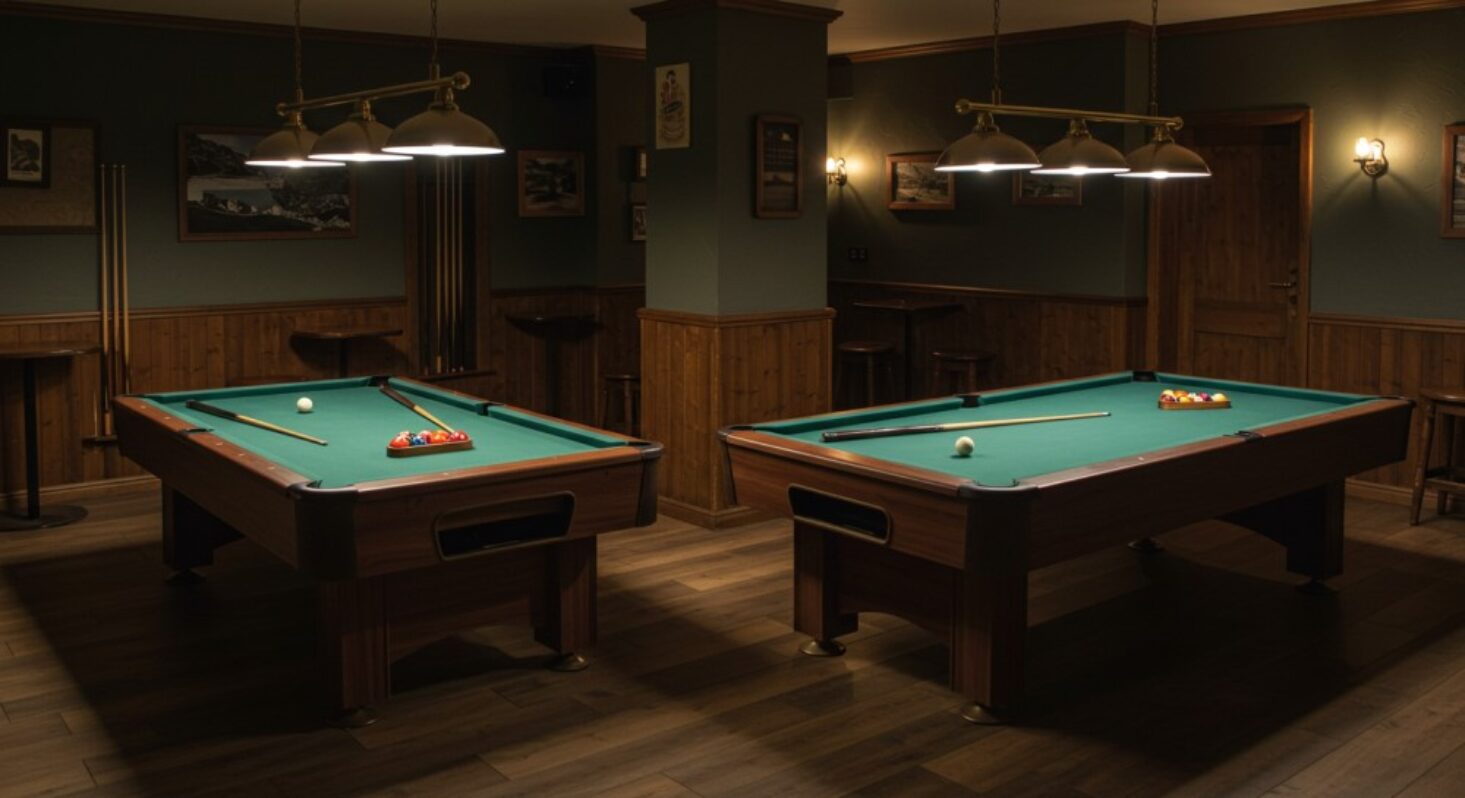
What Is the Difference Between British and American Pool?
Pool is a universal language spoken in pubs, clubs and pool halls on every continent, yet seasoned players quickly learn that the “one” game actually has two very different mainstream dialects: British pool and American pool. The basics—strike the white ball, sink the coloured ones—remain constant, but almost every tangible detail around that simple idea deviates.
Table sizes shrink or stretch, pockets tighten or open up, balls change weight, cues change profile, and even the cloth under your bridge hand transforms the way the game feels—these subtle variations perfectly illustrate the difference between British and American pool, each offering its own unique challenge and style.
This guide unpacks those contrasts in plain language. It is written for the curious pub player who has wandered into a foreign bar and felt instantly out of depth, for the improving league regular who wonders why televised professionals seem to be playing another sport, and for anyone who simply enjoys learning how design decisions shape human behaviour.
We will look at equipment first, then rules, then style, before closing with American pool tips on skill transfer. By the end you should feel confident stepping up to any table, anywhere, and understanding why the game behaves the way it does.
1. Table Size and Playing Geometry

The most obvious divergence appears before the first ball is struck: the footprint of the table itself. British pool is normally contested on six‑ or seven‑foot tables measured along the longest rail, though home bars occasionally squeeze in a five‑footer. The playing surface is roughly two‑thirds the size of an American table, so long pots rarely demand a rest and cue‑ball routes are short and deliberate.
American pool tables, on the other hand, start at eight feet for casual use and extend to nine feet for tournament play. A nine‑footer covers nearly double the area of a British seven‑footer, transforming the relationship between cue ball and object ball. Long pots demand power, topspin and precise sighting, while break‑out patterns often send the cue ball three rails to settle mid‑table—an epic voyage on a British layout.
Table markings differ, too: British tables carry a semicircular “D” at the baulk end; American tables rely on invisible head and foot strings and a rack spot. These geometric cues dictate stance positions, break rituals and, ultimately, tactical possibilities.
2. Ball Size, Weight and Identification
Pick up a British pool ball and it nestles neatly into an adult palm. Each sphere measures two inches (50.8 mm) in diameter and is relatively light. Sets come in seven reds, seven yellows, a black eight‑ball and a white cue ball—simple and pub‑friendly.
American sets supersize the experience. Their balls measure two‑and‑a‑quarter inches (57.15 mm) and weigh about twenty per cent more. Numbers sit beneath glossy stripes or solids so referees can track fouls in rotation games such as nine‑ball. Extra mass changes the physics: collisions transfer more momentum, spin clings longer, and clusters burst wider on impact.
Coin‑operated British tables sometimes use an undersized cue ball so the return mechanism can separate it from object balls after scratches. American venues rarely need such compromises, relying on optical sensors or open returns.
3. Cue Construction and Tip Dimensions
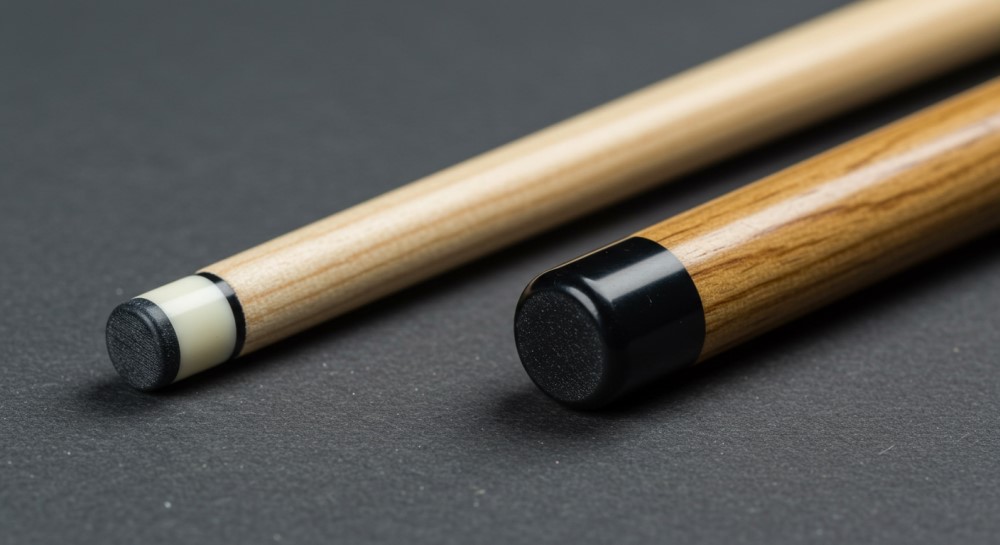
Because balls and pockets behave differently, cue design has evolved to suit each code. Traditional British cues, crafted from ash or maple, finish at 57 inches with an 8–9 mm leather tip—perfect for surgical control on tight tables.
American cues stretch to 58 inches or more, weigh an extra ounce or two and sport a 12–13 mm tip that tolerates powerful breaks and extreme side spin. Many US players carry a dedicated break cue with a phenolic tip for sledgehammer impacts, plus a playing cue for finesse. Joints differ, too: British cues often split three‑quarters down the butt; American cues break at the mid‑point with quick‑release pins for fast shaft changes.
4. Cloth Types and Table Speed
Run your hand against a British cloth and you will feel a nap, a directional pile akin to freshly mown grass. The woollen weave grips chalk, damps speed and even steers slow‑rolling balls subtly “downhill” with the grain. Experienced players exploit this by playing gentle shots into centre pockets that would jaw on slick cloth.
American tables wear worsted wool speed cloth, shorn of nap and woven so tightly the surface feels like silk. Balls rocket off cushions, side spin holds longer and kicks rebound sharply, rewarding bold three‑rail positional routes. Humidity exaggerates the contrast: a damp British cellar slows the nap further, while air‑conditioned US arenas maintain lightning pace.
5. Pocket Openings and Cutting Angles
Stand over a British corner pocket and you will notice jaws that taper swiftly, forming an aperture scarcely wider than the ball itself. Rail‑first shots rattle and stay out, so matches feature cautious cannons and cluster management.
American pockets are far friendlier. Corner jaws present a larger mouth with suede‑soft leather that “sucks” balls on thin cuts. Bank shots and combinations that would clang in Britain glide home, encouraging aggressive shot‑making and spectacular clearances.
6. Rule Frameworks and Game Variants
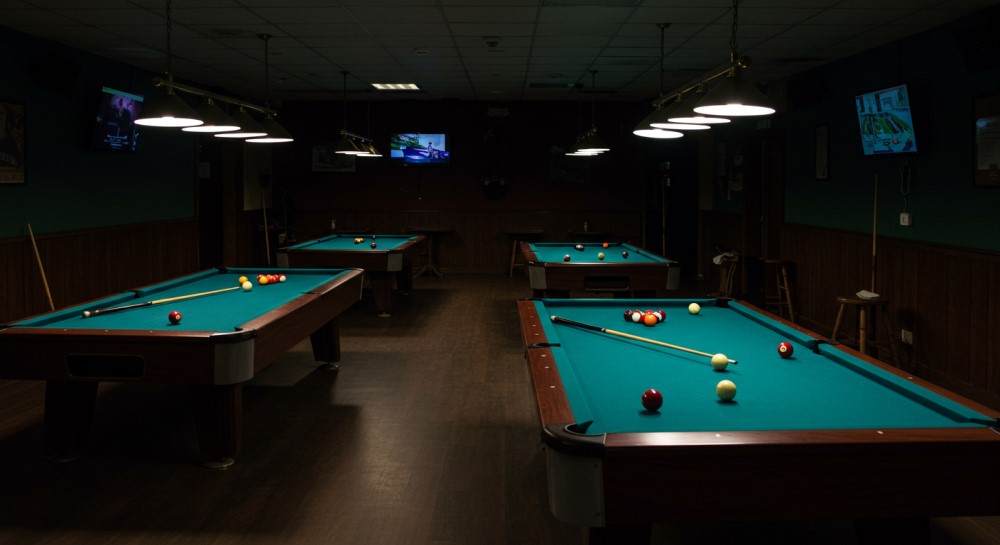
British Pool
The UK game revolves around two rule sets: World Rules (common in pub leagues) and Blackball (the international standard). Players claim reds or yellows after the break and must pot their colour set before the black. Fouls yield either a free shot or two visits, nurturing tactical safety battles and deliberate snookers.
American Pool
Across the pond you meet three main variants:
-
8‑ball – clear solids or stripes, then the eight.
-
9‑ball – strike the lowest numbered ball first; potting the nine wins.
-
10‑ball – similar to nine‑ball but with called shots, adding strategy.
Fouls almost always award ball in hand anywhere, so mistakes are brutally punished and frames can end in a single visit.
7. The Break Shot: Strategy Versus Power
Nothing spotlights the cultural gulf like the break. On a seven‑foot British table the goal is a controlled explosion: at least four balls must reach a cushion or one must drop, but excessive force tends to tangle colours.
American nine‑ball elevates the break to an art. Players smash racks at over 20 mph, park the cue ball mid‑table and often sink multiple balls. A dry break usually hands control—and the rack—to the opponent, so aggression is richly rewarded.
8. Strategic Temperament and Shot Selection
Equipment and rules coalesce into distinct temperaments. British pool prizes patience: unforgiving pockets and modest foul penalties encourage safety exchanges, guarding open pockets and laying snookers.
American pool rewards momentum. Generous pockets and ball‑in‑hand fouls make offence the best defence. If a run‑out is possible, players seize it immediately, relying on heavy spin and three‑rail routes to keep the cue ball in the open.
9. Competitive Scenes and Cultural Context
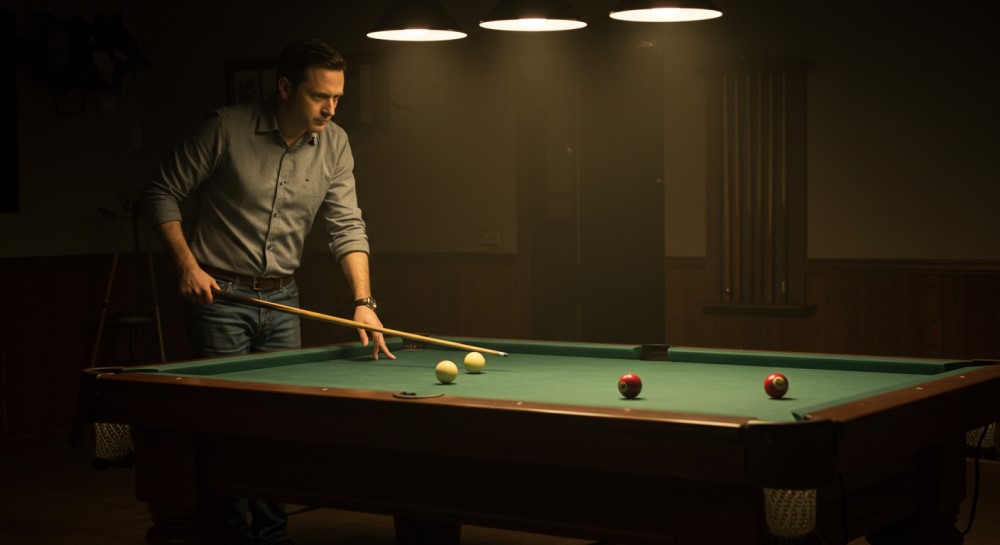
In Britain the grassroots scene lives in pubs. Tables share floorspace with dartboards and fruit machines, pints resting on rail tops. National tours exist, but television coverage lags behind snooker.
In the United States, purpose‑built pool halls host amateur leagues feeding into professional circuits. Events like the US Open 9‑Ball Championship and the Mosconi Cup boast six‑figure prize funds and global broadcasts, drawing crowds unheard of in British eight‑ball.
10. Skill Transfer and Learning Curve
Which code is harder? The honest answer is “whichever you know least.” British specialists initially over‑hit on slick nine‑footers; American big‑table veterans rattle balls in tight UK jaws. Each discipline sharpens different muscles: British pool hones pattern recognition and touch; American pool refines stroke mechanics, power generation and geometric imagination. Cross‑training on both tables is the quickest route to all‑round mastery.
11. Equipment Maintenance and Running Costs
Venue owners face contrasting maintenance regimes. A napped British cloth needs weekly brushing, periodic ironing and occasional re‑stretching because chalk settles deep in the fibres. Coin mechanisms demand regular cleaning so an undersized cue ball rolls smoothly through return channels.
American speed cloth tolerates heavier use before showing wear but must be replaced outright once burns appear; its slick character cannot be revived with brushing. Larger tables mean heavier slates and stronger frames, driving up delivery and installation costs. Phenolic‑resin American ball sets also retail at considerably more than red‑and‑yellow kits.
For home enthusiasts these realities matter. A seven‑foot British table slips into most garages and costs less in consumables. A nine‑footer is an investment in both space and upkeep but delivers the full tour experience many players crave.
12. Regional House Rules and Table Etiquette
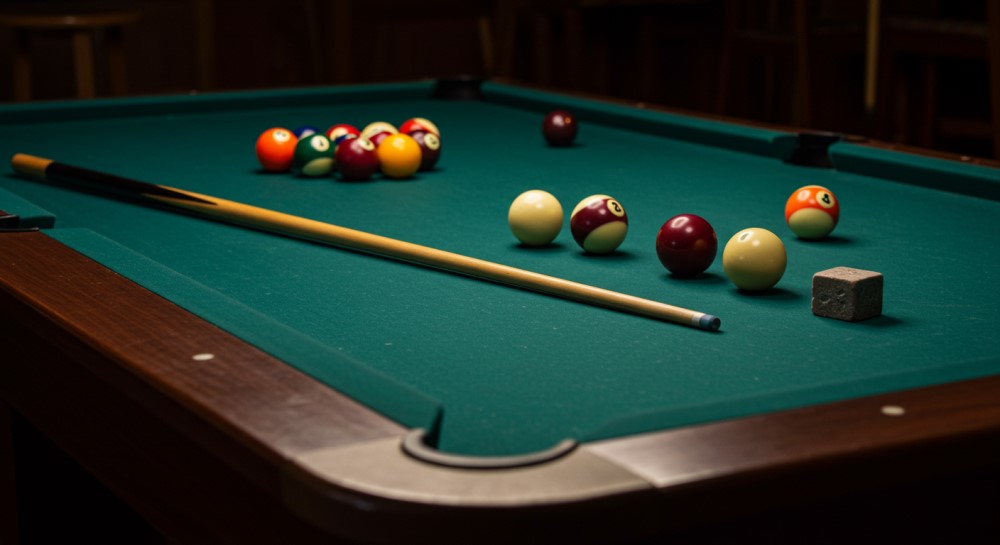
Local quirks colour each code. Walk into a Cornish seaside pub and you may find “shoot again on the black” or bans on skill shots. Head north and the black must drop centre pocket only. These tweaks keep cue lists moving and level the field between regulars and visitors.
Across the Atlantic, bar leagues sometimes allow early‑nine slop—any legally struck nine ends the rack—while others outlaw pattern racking or demand the two‑ball sits at the back diamond. In some Mid‑Western towns, sinking the nine on the break is an instant win; elsewhere it triggers a re‑spot.
Always ask about house rules before the lag, and match your tempo to local expectations. British opponents may relish drawn‑out safety duels; American rivals might perceive them as stalling. Adapting your rhythm earns goodwill and sharpens versatility.
Quick Reference: Difference Between British and American Pool
| Feature | British Pool (UK Eight‑Ball) | American Pool (Eight‑, Nine‑, Ten‑Ball) |
|---|---|---|
| Table Length | 6 ft or 7 ft | 8 ft (bar) or 9 ft (tournament) |
| Ball Diameter | 2 in (50.8 mm) | 2¼ in (57.15 mm) |
| Cue Tip Size | 8–9 mm | 12–13 mm |
| Cloth Type | Napped wool, slower | Worsted speed cloth, faster |
| Pocket Opening | Tight, rounded jaws | Wider, slanted jaws |
| Standard Rules | World Rules, Blackball | WPA Eight‑, Nine‑, Ten‑Ball |
| Foul Penalty | Free shot or two visits | Ball in hand |
| Typical Mind‑Set | Tactical, safety‑oriented | Aggressive, run‑out driven |
| Break Philosophy | Controlled, moderate power | Explosive power, cue‑ball park |
| Common Venues | Pubs, social clubs | Pool halls, pro arenas |
Final Thoughts: Which Should You Play?
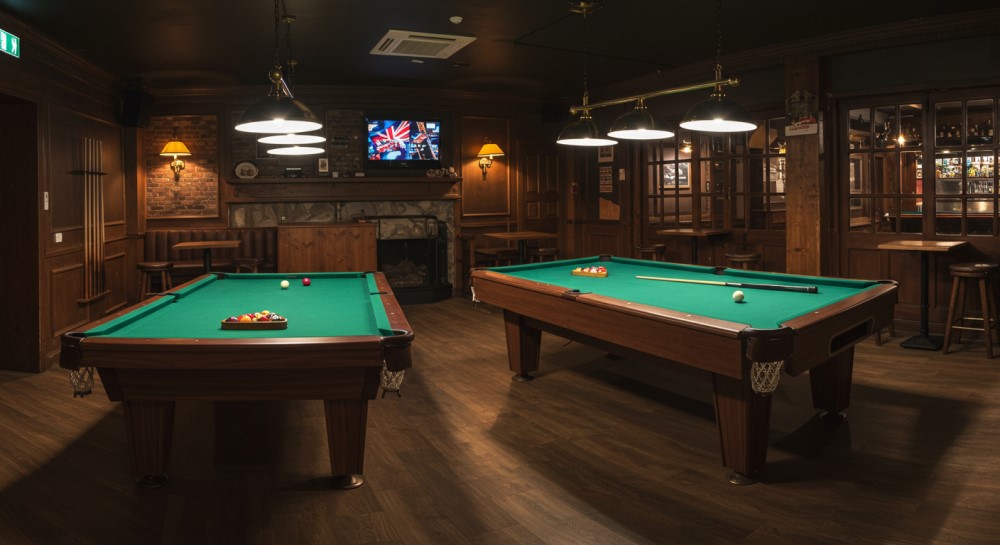
British and American pool share a lineage yet diverge in nearly every detail that shapes play. Small versus large tables, light versus heavy balls, nap versus speed cloth, tactical versus explosive rules—each binary pair creates a unique flavour.
Master British pool and you will develop patience, cluster management and razor‑sharp potting; conquer American pool and you will wield break power, three‑rail vision and fearless shot‑making.
The real beauty of pool lies not in uniformity but in the rich dialogue between its dialects. So swap cues, adapt stances, and relish the moment your brain flicks from safety blueprint to break‑and‑run instinct.
Whether under the low beams of a Yorkshire pub or beneath the neon glow of a Las Vegas ballroom, the satisfying click of resin and the hush before the final eight‑ball drops remain universal. Enjoy both worlds—and watch your game flourish.
